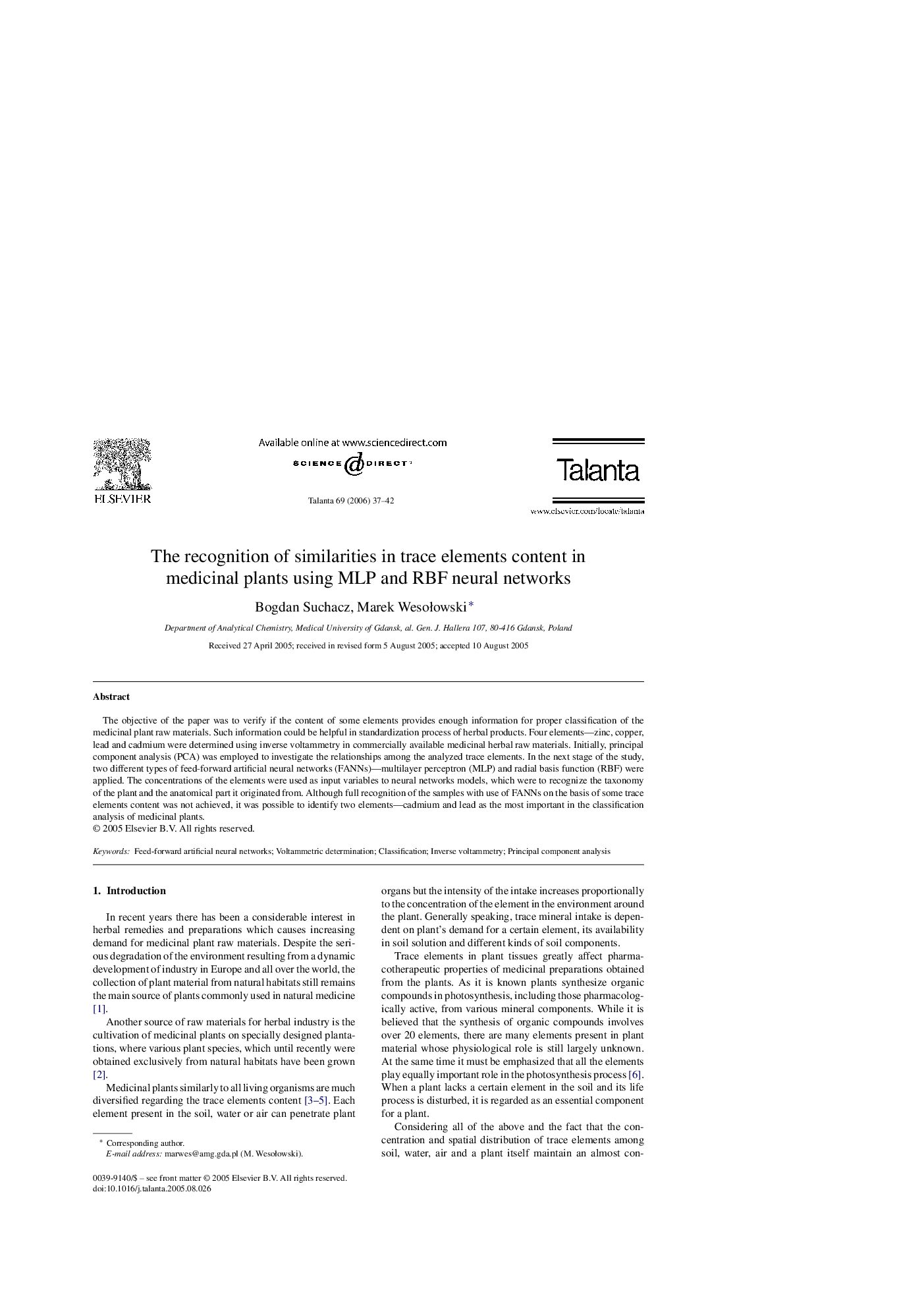| Article ID | Journal | Published Year | Pages | File Type |
|---|---|---|---|---|
| 1245764 | Talanta | 2006 | 6 Pages |
Abstract
The objective of the paper was to verify if the content of some elements provides enough information for proper classification of the medicinal plant raw materials. Such information could be helpful in standardization process of herbal products. Four elements-zinc, copper, lead and cadmium were determined using inverse voltammetry in commercially available medicinal herbal raw materials. Initially, principal component analysis (PCA) was employed to investigate the relationships among the analyzed trace elements. In the next stage of the study, two different types of feed-forward artificial neural networks (FANNs)-multilayer perceptron (MLP) and radial basis function (RBF) were applied. The concentrations of the elements were used as input variables to neural networks models, which were to recognize the taxonomy of the plant and the anatomical part it originated from. Although full recognition of the samples with use of FANNs on the basis of some trace elements content was not achieved, it was possible to identify two elements-cadmium and lead as the most important in the classification analysis of medicinal plants.
Related Topics
Physical Sciences and Engineering
Chemistry
Analytical Chemistry
Authors
Bogdan Suchacz, Marek WesoÅowski,
